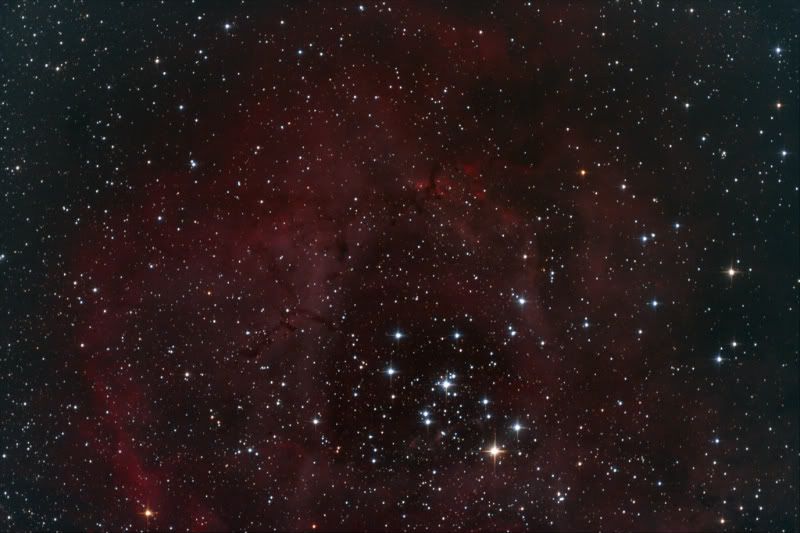This is an image I took last December 8, but never was satisfied with the results. I've reprocessed it, which I think gave much better results. Unfortunately, the image is slightly out of focus (the bright stars should not have double diffraction spikes), and the object isn't centered in the image. I am hoping to get a much better result this year, as this is on my re-do list.
 NGC 2237 - The Rosette Nebula, in the direction of the constellation of Monoceros
NGC 2237 - The Rosette Nebula, in the direction of the constellation of Monoceros
The Rosette Nebula is a large, diffuse emission nebula located 3000 light-years away (so large, in fact, that I can't get it all in view at the focal plane of my telescope). The great abundance of hydrogen gas gives NGC 2237 its red color in most photographs. The wind from the open cluster of stars known as NGC 2244 has cleared a hole in the nebula's center.


 Please register to participate in our discussions with 2 million other members - it's free and quick! Some forums can only be seen by registered members. After you create your account, you'll be able to customize options and access all our 15,000 new posts/day with fewer ads.
Please register to participate in our discussions with 2 million other members - it's free and quick! Some forums can only be seen by registered members. After you create your account, you'll be able to customize options and access all our 15,000 new posts/day with fewer ads.